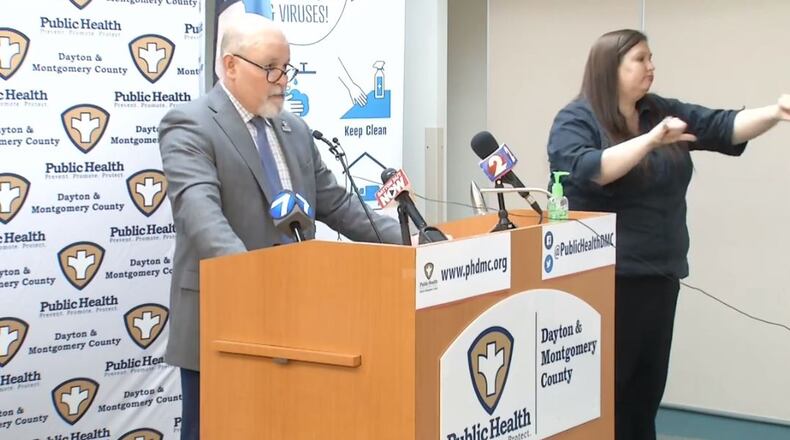“It’s not just about those locations, it could happen anywhere,” said Cooper, who predicted more outbreaks and clusters.
Those businesses include:
- Community Blood Center, 11 cases
- Hospice of Dayton, 9 cases
- Respiratory and Nursing Center of Dayton, 26 cases
- Sugar Creek Brandworthy Food Solutions, 30 cases
- Crocs Distribution Center, 33 cases
- Energizer Global Auto Care, 8 cases
- Chewy Fulfillment Center, 4 cases
- Franklin Iron and Metal, 7 cases
- Minerva Bunker Gear Cleaner, 7 cases
- Friendship Village, 14 cases
- Fuyao Glass, 5 cases
- St. Leonard CHI Living Communities, 2 cases
- Dryden Road Pentecostal Church, 14 cases
- Montgomery County Jail, 3 cases
In Montgomery County, the number of COVID-19 cases reported was 433 at the time of the last county press conference on May 12, and the total number of cases is now 1,118.
MORE: Coronavirus: Will workplaces ever be the same?
“That’s about a 150 percent increase in cases,” Cooper said of the increase over the last five weeks as Ohio’s economy has started to reopen and testing capacity has increased.
“That’s not unanticipated,” he said. “That’s what we’ve expected.”
Montgomery County, #Ohio. pic.twitter.com/sbpCpsUMcw
— Governor Mike DeWine (@GovMikeDeWine) June 18, 2020
>> Coronavirus: Is your ZIP code seeing an increase in cases?
Gov. Mike DeWine discussed the spike in COVID-19 cases during his afternoon press conference from the Statehouse. He noted that data shows the highest increase in cases are in Huber Heights, Riverside, parts of Dayton and Trotwood.
These are the zip codes with the highest number of cases. They are in Huber Heights, Riverside, parts of Dayton, and Trotwood. pic.twitter.com/bj2uB3jB3x
— Governor Mike DeWine (@GovMikeDeWine) June 18, 2020
What is particularly concerning is the coronavirus data as it relates to race, Cooper said.
There is one case for every 556 Montgomery County residents, but when broken down by race, there is one case for every 347 black residents and one case for every 866 white residents, he said.
“Clearly, we have a racial disparity in testing and outcomes,” Cooper said.
About the Author
